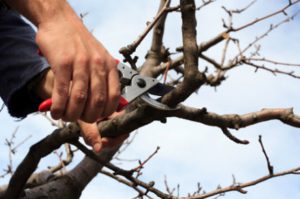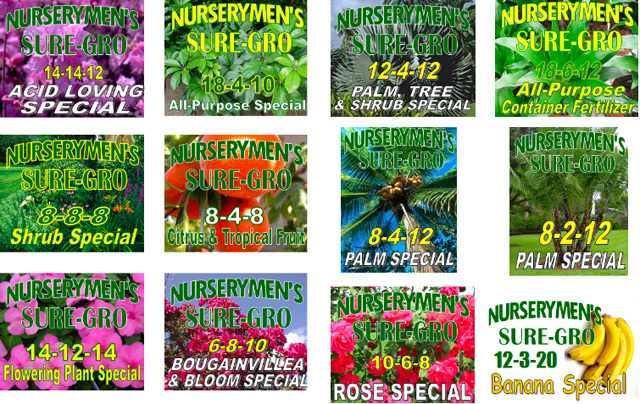Fungus Issues & Fungicides
Although we didn’t get a killing freeze (yet!), we did get a lot of rain and undoubtedly has led to some fungus issues in your garden. Many times, fungus will right itself when a plant or grass stops getting overwatered. If, for some reason, you continue to have lots of fungus spots on your plants as we get closer to spring or drier, whatever happens first, and you are continuing to get fungus on new growth, you may need to do a couple of things.
First, monitor how much water your grass/plants are getting. You can’t control the rain, but you can control your irrigation. Secondly, start using a fungicide such as Fertilome Fungicide 5. This product not only has active ingredients that have immediate impact on the fungus but long-term effects to continue to protect against fungus- assuming watering situation is cured. Always follow the directions on the label and remember to spray plants late in the day when bees are less active, and the sun won’t burn the plant or grass.
Palm Selection Information
Although we have not had a bad freeze yet this year, the following information is useful when making palm purchase decisions.
Palms give a landscape a more tropical look so it understandable that people would try to grow palms not designed for our climate zone (9). We get many newcomers to the area that for obvious reasons, do not know anything about palm trees and assume that any palm can grow in our zone. Likewise, they may see palms for sale and make an assumption that if they are for sale in our area, they must be for our area. Here is some information regarding what happens to palms that are planted in areas that they are not zoned for.
There are 3 types of cold weather events that can injure palms.
- Chilling– this occurs in tropical species at temperatures above freezing. An example would be a palm that is used to temperatures of 70 and suddenly are hit with 45-degree temperatures. They may suffer dead tissue. This would not be irreparable damage however symptoms may not show unless exposed to temperatures in the low to middle 30s.
- Frost- same results as chilling but occurs on clear, calm nights when heat loss on the leaf surface can cause leaf temperatures to drop to 32 or less, even though the air temperature may be much warmer. This damage usually results in spotty damage on the crown of the palm.
- The third type of cold weather damage is caused by a hard freeze during which the air and the plant surface temperatures drop below 32 degrees- usually because of cold winds. In these circumstances, damage will appear on mature leaves, however the new growth spear is the least cold hardy part of the palm. Therefore, the most common result of bad freeze damage is the spear being degraded and several weeks later, can be pulled right out.
Factors that affect how much damage is experienced include planting them in areas protected by buildings or tree canopies. Appropriate fertilization can also improve the heartiness of the palm.
Treatment of damaged palm– since brown foliage is the first most obvious symptom observed homeowners are often anxious to trim off these leaves. Avoid the temptation until warm weather returns as even dead leaves provide insulation. When the weather warms removal of completely brown leaves can be done but leave those with just damaged tips.
Finally, as cold can also cause nutrition issues, fertilize your palms with Nurserymen SureGro 8-4-12 as soon as the weather warms-usually sometime in March.
Palms that most susceptible to severe damage in Flagler County, yet commonly seen are:
Christmas Palms, Foxtail Palms, Fishtail Palms. Pygmy Date Palms can also suffer damage however rarely catastrophic damage.
** Credit: UFIFAS Extension, Ask IFAS, Cold Damage on Palms by Timothy K. Broschat.
Trimming:
Deciduous trees (like elms and crape myrtles) and some shrubs may be pruned now with some exceptions such as azaleas, gardenias and hydrangeas and any other spring bloomers. Trim camellias only if they are done blooming. Reshape your hedges now as there will be a large flush of growth happening in another 3-4 weeks and you won’t have to look at twigs quite as long when they flush out.

Trim Crape Myrtles toward the end of the month if necessary. Trim lightly to shape, remove crossing branches and suckers. Topping Crape Myrtles will not only shorten the life of the tree, create fewer flowers it will result in long, leggy weak growth that will bow over when flowering especially in heavy summer rains.
Pruning Citrus is not required however it can be done in late February or early March. Selectively prune the citrus tree- no shearing! Find a growth bud and make an angled cut just above it. Do not be afraid to keep the tree shorter to make picking easier.
Citrus is not completely cold hardy and young trees (under 5 years) should be protected whenever temperatures are below freezing. Cover the graft as well as the top of the tree. Water the tree well the day before to assist with moisture aspiration from the freeze. In addition, trees that has a large amount of fruit on them as less cold hardy as most of the nutrition goes into the fruit which makes the trees weaker.
Click here for an article on the proper pruning techniques!
As mentioned citrus trees are grafted with the top of the tree being the scion that are added to a variety of rootstocks. NEVER allow rootstock (below the graft) to grow! This will cause your tree to get taken over by the rootstock and you will no longer have an orange or grapefruit or whatever. If you are unsure if it is coming from the rootstock you can tell from the leaves- leaves on the main tree will be single whereas leaves on the rootstock are trifoliate (or three grouped together). If in doubt, ask us!
Fertilizing:
Wait until the end of February/ early March before fertilizing your plants, palms and trees. We recommend Nurserymen SureGro slow release granular Palm Fertilizer 8-4-12, 6-8-10 for blooming trees and flowering plants.

Citrus and fruit trees need to be fertilized this month to ensure an abundance of blooms and growth. If you have had previous problems with scab disease or fungus disease, now is the time to apply Copper Fungicide when the new leaves are appearing and again when two-thirds of the flower blossoms have fallen.
If you have had a problem in the past with a small amount of blooms producing fruit here are some things to check:
1. Nutrition – are you using the right product in sufficient quantities?
2. Irrigation – do you have spray heads that hit your tree directly? This will knock flowers and small fruit off- hence no or little fruit.
3. Spraying – never spray trees when they are in bloom!
4. Bees – have flower sources to attract bees to your yard- bees pollinate citrus.
Often we are asked why fruit is not as sweet as previous years. Cold temperatures will make the fruit sweeter but more importantly, how much fruit is on your tree plays a large role. If you have a bumper crop of fruit the sugar has to get distributed farther-thus getting diluted. Thin out the fruit to have larger tastier fruit.
We recommend Nurserymen SureGro Fertilizer 8-8-8 with all the micronutrients that your fruit trees will require. Fertilize middle to the end of February for Citrus trees. Regular fertilizer and water of 1” per week are also important. See fertilizing guide on our website – Click Here!
Blueberries should be fertilized now too with an acid-loving fertilizer such as Nurserymen SureGro 14-14-12. Blueberries prefer frequent light fertilizations.
Citrus becoming ripe this month will be Temple Oranges, Dancy tangerines, Honey Murcott Tangerine, Minneola (Honeybell) Tangelo.